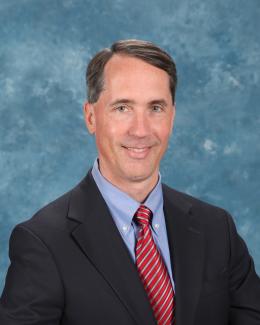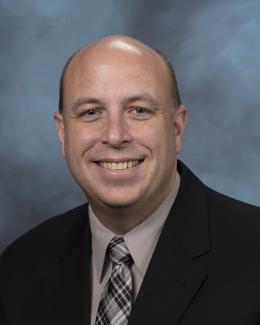
Materials scientists, electrical engineers, computer scientists, and other members of the neuromorphic computing community from industry, academia, and government agencies gathered in downtown Knoxville July 23–25 to talk about what comes next in supercomputing after the end of Moore’s Law.
According to this principle, computing power has steadily increased because the number of transistors on a single computing chip doubles every year. Many computing experts anticipate that Moore’s Law may soon end, which means new methods will be necessary to continue developing leadership-class supercomputers.
These professionals traveled from across the country and around the world to discuss new research efforts, collaborate, and present work related to neuromorphic systems during the second annual International Conference on Neuromorphic Systems (ICONS), hosted by the US Department of Energy’s Oak Ridge National Laboratory (ORNL).
Summit, the world’s fastest supercomputer, resides at ORNL’s Oak Ridge Leadership Computing Facility (OLCF), a DOE Office of Science User Facility. Titan, also located at the OLCF, is currently being decommissioned to make room for Frontier, which will be ORNL’s first exascale computer.
“Titan was yesterday’s supercomputer, Summit is today’s, Frontier is tomorrow’s, but what comes after that? How are we going to keep making computers faster or more efficient?” said Katie Schuman, a computational scientist at ORNL and a member of the ICONS organizing committee.
One answer could be neuromorphic computing, a field inspired by neural networks in the brain. Hardware in neuromorphic computers is made up of electronic neurons and synapses that mimic the behavior of their biological namesakes. These artificial neural networks allow neuromorphic computers to analyze data and solve problems faster via machine learning and deep learning while using less power than conventional machines.
“Neuromorphic computing is all about fitting neural networks into hardware,” Schuman said. “ICONS brings people together to accelerate progress in this field.”
Speakers presented on topics ranging from computing architectures and algorithm optimization to software development and spiking neural networks. For example, Mike Davies, director of Intel’s Neuromorphic Computing Lab, explained how new neuromorphic processors are designed to adapt to and learn from stimuli while maximizing energy efficiency to potentially enable novel artificial intelligence applications.
Keynote speaker Gregory Cohen, an associate professor in neuromorphic systems at the International Centre for Neuromorphic Systems at Western Sydney University and program lead for neuromorphic algorithms and space applications, provided several real-world examples to demonstrate the possibilities of neuromorphic computing.
He explained how a robotic version of foosball, the table-top soccer game, uses a neuromorphic algorithm to respond in real time to the fast and unpredictable decision-making of a human opponent. In demonstrations, the automated players repeatedly moved to the right place at the right time to defend attacks from the other team.
Cohen also described how his team uses neuromorphic systems to conduct cost-effective space situational awareness, which involves sensing and tracking objects in Earth’s orbit. Although people rely on satellites for everyday activities ranging from television viewing to navigation, there have not been many efforts to study or regulate satellites. He noted that regulations could help mitigate future damage from high-speed satellite debris in an increasingly crowded atmosphere.
Using specialized cameras and telescopes with neuromorphic sensing capabilities, Cohen and his team developed the Astrosite, the first mobile space situational awareness module with the capability to quickly and accurately collect event-based data to successfully image stars, planets, and satellites. Although stable platforms are usually needed to observe such phenomena, Cohen said motion improved visibility in this case. The team built the mobile observatory with a sliding roof to accommodate a telescope with a refined motor system.
“We might actually be able to do far more characterization based on this,” he said. “You move, and you see it [a satellite] move through the field of view. Tracking a single object is surprisingly easy.”
With even more advanced equipment, Cohen hopes to eventually track exoplanets and other objects outside the solar system.
“There are exciting applications in astronomy that mimic the ones in space situational awareness,” he said.
Finally, Cohen described a “biological roadmap for sensor development” to consider how technology can mimic organisms on a scale from simple sponge larvae, which respond to light but lack complexity, to honey bees, which work together to complete complicated tasks, to mantis shrimp, which have some of the most unusual eyes in the animal kingdom.
UT-Battelle LLC manages Oak Ridge National Laboratory for DOE’s Office of Science, the single largest supporter of basic research in the physical sciences in the United States. DOE’s Office of Science is working to address some of the most pressing challenges of our time. For more information, visit https://energy.gov/science.—Elizabeth Rosenthal




